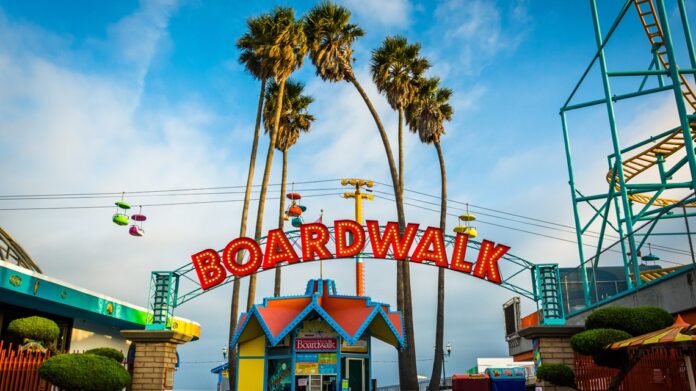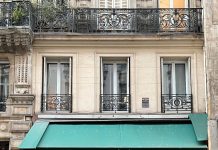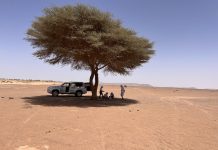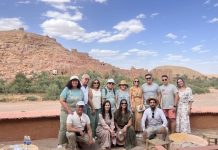Everything ranging from funnel cakes at the boardwalk to scuba diving and petting otters, here are some of Santa Cruz’s best summer attractions.
SANTA CRUZ, Calif. — Hot temperatures in summer mean beaches are about to be crowded with travelers looking for fun.
Santa Cruz is one of the most entertaining cities in Northern California, especially during the summer. From funnel cakes at the boardwalk to scuba diving and petting otters, here are some of Santa Cruz’s best summer attractions.
- Santa Cruz Beach Boardwalk
- Mission Santa Cruz 1791
- Santa Cruz Mission State Historic Park
- Natural Bridges State Beach, Tidepools, and Monarch Trail
- Santa Cruz Wharf
- UC Santa Cruz Arboretum & Botanic Garden
Santa Cruz Beach Boardwalk
The Santa Cruz Beach Boardwalk is known for its amusement park just steps away from the Pacific Ocean. The Boardwalk has been operating since 1907 and two of its rides are even National Historic Landmarks.
There are indoor arcades that offer various games to play such as pinball machines, a vintage game collection, a two-story miniature golf course, a laser tag arena and a family bowling center across the street.
The boardwalk sells fair food and much more, including corn dogs, deep-fried artichokes, chocolate-covered bacon and deep-fried Twinkies.
Views on views, the Boardwalk is next to the Monterey Bay National Marine Sanctuary, where otters, dolphins, sea lions and even whales are seen swimming.
Santa Cruz Beach is connected to Cowell Beach, and everyone loves the open and sandy ocean floor. People love to play beach volleyball, go surfing, do beach yoga, play fetch with and walk their dogs and collect seashells.
The Santa Cruz Beach Boardwalk is open daily starting at 11 a.m. and is located on 400 Beach Street.
Mission Santa Cruz 1791 and State Historic Park
In California, there are 21 historic Spanish missions that have been established between 1769 and 1833. All 21 of these missions are along a California Historic Mission Trail located on or near Highway 101.
These missions were built by the Spanish government in an effort to expand on North American territory while converting, educating and civilizing the indigenous population.
Santa Cruz happens to be the 12th mission, built in 1791 by Father Fermín Lasuén as the “Mission la Exaltacion de la Santa Cruz”.
Due to its location, being ruined by various earthquakes and flooding, Father Fermín Lasuén had to relocate. It was later rebuilt in 1793 and served as housing for families who lived and worked at the Mission until 1834 when it was abandoned.
Once abandoned, it was privately owned for decades of private ownership. The adobe was then sold to the State of California, restored and opened in 1991 to the public as the Santa Cruz Mission and State Historic Park.
There’s also a half-scale replica of the 1794 Santa Cruz Mission Church that sits about 200 feet away from the original site.
The State Historic Park is around the corner from the mission, and you can do anything like take a tour at the Mission museum and look around in the different exhibits, take a nice picnic in the picnic areas, check out the interactive programs, and buy anything you want from keychains and history books to postcards and T-shirts at the park’s store.
The Visitor Center at the Santa Cruz Mission State Historic Park is open from Saturday through Monday from 10 a.m. to 4 p.m. and is located at 144 School Street.
The Santa Cruz Mission is open on Friday and Saturday from 10 a.m. to 4 p.m. and on Sunday from 10 a.m. to 2 p.m. and is located at 120 Emmett Street.
Time to get out the camera and visit Santa Cruz’s Natural Bridges. But first off, why are they called the Natural Bridges? There’s a natural arch in a singular but huge rock that was once broken off from the land.
When visiting the Natural Bridges, you’ll see nature at its finest from birds and whales to seals and otters – even some coastal scrub and grasslands.
Due to the low tides, it’s easy to look at the sea life underwater and watch sea stars, shore crabs, sea anemones and other sea animals come to life in their natural habitat.
Remaining onshore, the Natural Bridges also has tide pools, which are just located to the north of the beach. Because the tide pools have lots of small deep holes that are several feet deep, each hole is packed with algae and other marine life that are easy to observe.
Going offshore, Natural Bridges has a Monarch Butterfly Natural Preserve, which is a temporary home for thousands of Monarchs and the only State Monarch Preserve in California.
The Monarch Grove at Natural Bridges has been declared a Natural Preserve, meaning they must protect these butterflies and their winter habitat from human intrusion or harm.
The Natural Bridges State Beach is open every day from 8 a.m. to sunset and is located at 2531 W Cliff Drive.
The Natural Bridges Tidepools are a 3-minute walk from the Natural Bridges State Beach, so check HERE for when the tides are best.
The Wharf in Santa Cruz has all the shops, restaurants, and recreational activities you need!
Similar to Santa Monica’s pier, a scenic walk on the wharf will make you get your cameras out for sure.
This wharf is a wooden pier that goes about 21-feet deep in the ocean. It was built in 1914 and used for fishing, boat tours, watching sea lions, dining, nightlife and gift shops.
Known as the “Gateway To The Bay,” Santa Cruz is very careful of its beaches, reminding visitors to do their part and live like a local.
The Santa Cruz Wharf is open from 5 a.m. to 2 a.m. and is located at 21 Municipal Wharf.
I’ve taken a lot of sunset photos from the wharf and last night I decided to include the wharf itself in some sunset…
Posted by Native Santa Cruz on Sunday, November 28, 2021
UC Santa Cruz Arboretum & Botanic Garden
Located on UC Santa Cruz’s campus, the arboretum and botanic garden is a 135-acre living museum filled with more than 300 rare, threatened, and unique plant species and plant families of Mediterranean climates like New Zealand, South Africa and Australia.
An arboretum is essentially just a botanical garden with a heavy proportion of woody plants and trees. This one has an aroma garden filled with plants of all shapes and sizes such as lavenders, oreganos, thymes and many other drought-tolerant perennials and shrubs.
Many bees and butterflies like to flock to the aroma garden, so visitors are able to see different species of butterflies too! They also have a succulent garden that focuses on succulents from the coastal areas of Mexico and California.
There are hotspots to bird watch called “Birding at the Arboretum,” and these hotspots are for local birders and provide an excellent introduction to Californian birds for visitors.
UC Santa Cruz’s Arboretum and Botanic Garden is open from 9 a.m. to 5 p.m. daily.
WATCH MORE ON ABC10: The ultimate 58 county road trip of California: A Bartell’s Backroads special










